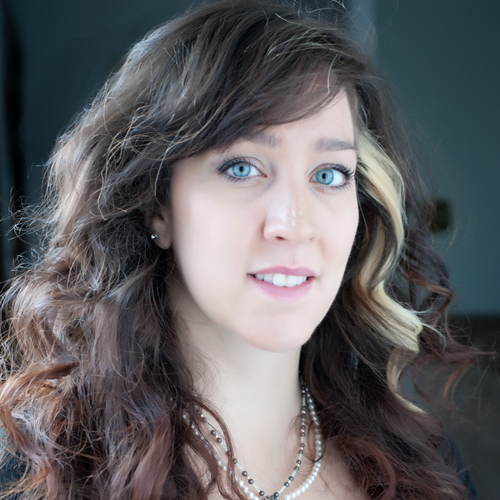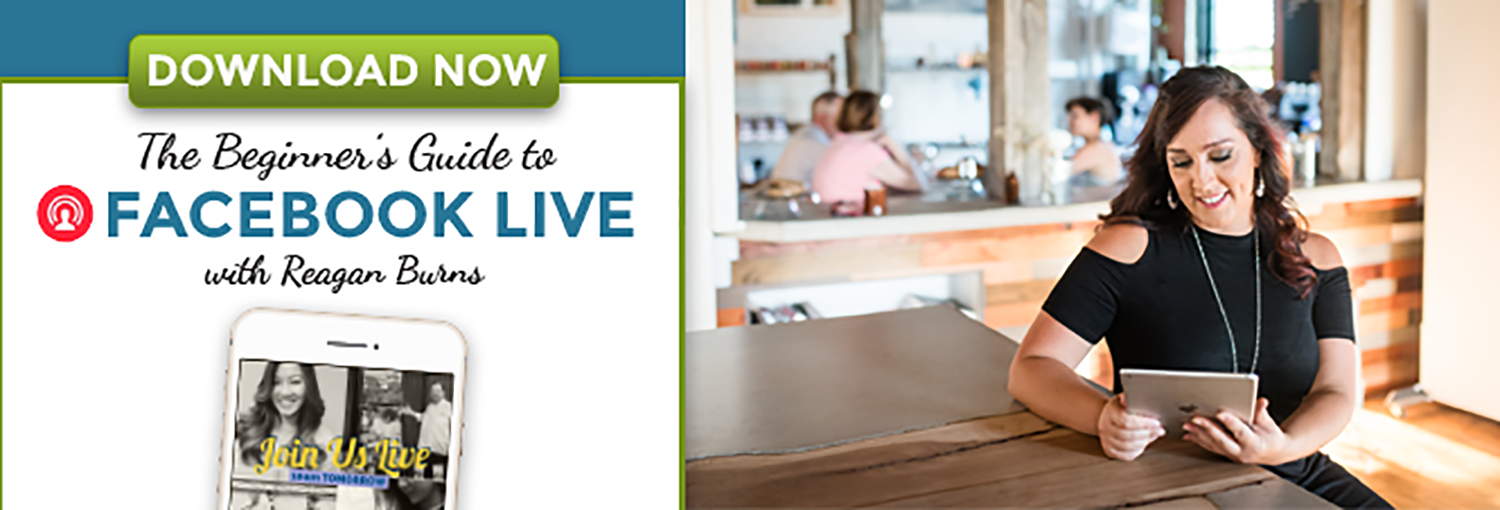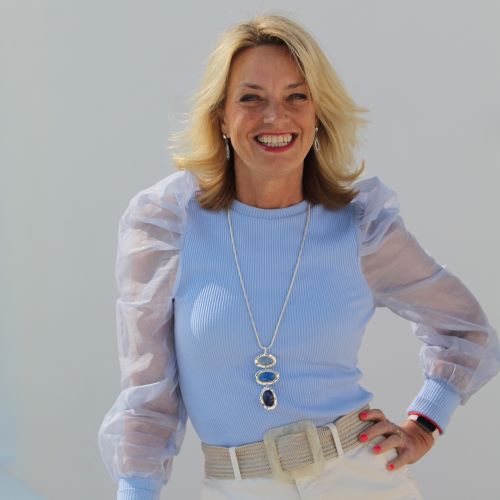Reagan Burns
Episode 63: Create Engaging, Curated Experiences with Live Video, with Reagan Burns
In this episode, you will learn about leveling up your live video by creating engaging, curated experiences from Reagan Burns.
Reagan Burns started her career working for R&R Partners in Las Vegas, on the Las Vegas Convention and Visitors Authority as a designer on the What Happens Here, Stays Here campaigns. Her career path then brought her to Baltimore and then to Rochester, NY when she decided to open Lime Creative. She stayed focused on the tourism industry, working with clients like The Adirondack Coast Wine Trail, Ugly Disco, Rochester Events, The Rochester Lilac Festival, Park Ave Summer Arts Festival, and the Highland Bowl Concert Series. Her work includes branding and identity, print and digital marketing, website design, and social media marketing.
More on Reagan’s Background
I am really looking forward to learning from you today Reagan, thank you so much for joining me.
Yeah, thank you for having me. Excited to be here.
Your bio only gives us a small glimpse of who you are and where you are in your journey, so could you share in your own words a little bit more about yourself and your story?
I grew up in a family of four, and it seemed to us like we’re always moving. My dad was an aerospace engineer, and for whatever reason we just kind of moved coast-to-coast. I was born in California, and we did about eight years in Pennsylvania before we moved back to California in the San Francisco Bay Area. Finally, my mom put her foot down and we ended up staying in Ithaca, New York for high school. I think all of that moving and traveling and driving cross-country really, really facilitated that base of my own fascination with the tourism and hospitality industry. I love moving, I love seeing new things and experiencing the local culture that all these different places have to offer.
Out of high school, I went to RIT, Rochester Institute of technology for graphic design and marketing. As you mentioned, after that I moved out to Las Vegas to work R&R Partners. My father is originally from Las Vegas and my mom is originally from a farm in Iowa, so I can have these diverse backgrounds where can appreciate those two polar opposite destinations.
Las Vegas was amazing. R&R Partners was one of those ad agencies with the foosball and ping-pong tables, themed parties, and company barbecues. There was always fun things going on. At one point, I remember we had a company table at a charity, and I ended up dancing on stage with the Beach Boys. It’s just all these crazy things that you don’t really necessarily get in your normal work environment. But it was a large agency and I was a beginning level designer, and I saw the writing on the wall that it would be a long and difficult path to really be in a position of management or a lead designer.
I decided to move on and kind of took a hiatus in Baltimore working for a dental consulting agency that did marketing. It was the world’s largest dental consulting agency, and I’m sure we can all imagine how exciting that work was. The contrast in those two positions really cemented that I needed to be doing something within an industry that I was passionate about and that’s what started the drive to start Line Creative and have that creative control over clients and the work and everything going on within my own company.
I moved back to Rochester. I love the Rochester area; I love the Finger Lakes. I think we have so much to do in that area, and it’s also always growing, it’s always expanding on all of those things. Downtown Rochester I think has some great initiatives going. So I love it. I love it here, I love the city. My business here, I’ve had it for eight years now it’s really merged into something that I love going to do every day. My clients when I first moved back to the area tended to be in healthcare and fitness and supplements and things like that. I still have those few clients in that area, but after couple years I picked up the work for Rochester Events, which produces a number of the top events and festivals in Rochester, and I absolutely loved working with them. They’re an amazing client, and the work itself is fun to do as well.
Wow, that’s a really interesting story. I always find it fascinating when I talk to people on this podcast who work in the travel and tourism industry how much they actually travel, and also how their childhood experiences kind of influenced their love of travel. It sounds like it’s a common theme with you as well. I did not know that you graduated from Ithaca, so you moved here to the Rochester area but really lived right in the heart of the Finger Lakes as a kid. I think that that’s a really cool path that you’ve taken and I’m really looking forward to hearing more as we go through these are questions.
Yeah. We were technically in Lansing, New York, which is a very small little town next to Ithaca, but not many people know where that is. But that side of the lake, the east side of Cayuga Lake is definitely building its wineries and vineyards, and that’s exciting to keep going back home and seeing the progress there in that industry.
Yeah. Absolutely.
Partner with Influencers with Committed Followers
Well, I know you’re going to have a lot to say about our first segment of this interview which is all about creativity, and we’ll start with our very first question which is around this idea of standing out. As you mentioned even in your talk about your background when you talked about Las Vegas and contrasting that with Iowa, there are so many choices of places for people to travel to, events using the Rochester Events example that you talked about, and it’s a very competitive industry. I’m wondering what kinds of things you have done or that your clients have done to really stand out from the crowd.
Yeah, I think that backgrounds at the agency in Las Vegas really established this freedom in my book to be a little bit more playful with the message that we deliver. Especially for things like tourism, that it’s okay to really show them how great of a time you could have somewhere, as opposed to some other clients where you need to be a little bit more reserved and a little bit more corporate, per se. I love that I got that and that is now my norm. I’m more comfortable being more playful and joking within the brand’s message.
I think in the last few years something I’ve really honed in on is the social media aspect, and it is absolutely fascinating to me the evolution in the last 8 to 10 years of what social media for a business used to be. It used to be enough to have a Facebook business page and to post occasionally on there, whereas now it’s really moved into this mega house of digital marketing power and all the different Facebook ads and Instagram ads, LinkedIn ads, all those different formats.
The different objectives and for Rochester Events, just with having things like the craft beer expo, wine tasting expo, the Lilac Festival, and the music, the art, it really lends itself to having this more playful message and establishing the Rochester and surrounding areas as a place we can come for that experience. So in the social media, about two years ago, we were focusing largely on the Facebook Live side of things and working with social influencers.
We had a lot of fun with the type of videos that we were doing where it wasn’t just someone looking at the camera talking, but rather for the Lilac Festival, we did a cooking demo with Cheffery who used to be the executive chef at the New York Wine and Culinary Center. He was teaching a social influencer, Sir Rocha Says Linh Phillips how to make arancini balls on camera. The two of them, they’re both so dynamic, but in completely different ways, and it was a dish that Linh had never made, so I think it connected with the audience for people who had no idea what an arancini ball was. It’s deep-fried rolled risotto essentially. Some of the audience can relate to her and was really watching how to exactly make this recipe, and then the more experienced chef could relate with Cheffery. He combines his name with Chef Jeff, so Cheffery, which I think is really cute. And so they were relating to what he was saying, we talked a little bit about pairing wines with the food that he was making, and kind of getting this toes in the water experience to what people can expect at Lilac Festival that year.
Last year last summer we did a Facebook Live video to promote bikes, which is the bike sharing program in Rochester. The woman was on the video with me, Jenny and I, we had never actually, I mean I had ridden a bike, but I had never actually taken out a bike. We fumbled through a little bit, but I think that’s what’s important because, for a lot of our users, the Zagster bikes had only been in Rochester for a couple weeks. There was plenty of people who had never done that experience, and it’s all done through a mobile app and a credit card, and the locks automatically locking and unlocking. So those are the type of experiences we try to give on our Facebook Live videos, and I think the like that is really what separates us from other festivals and other events is that we give these engaging curated experiences over live video.
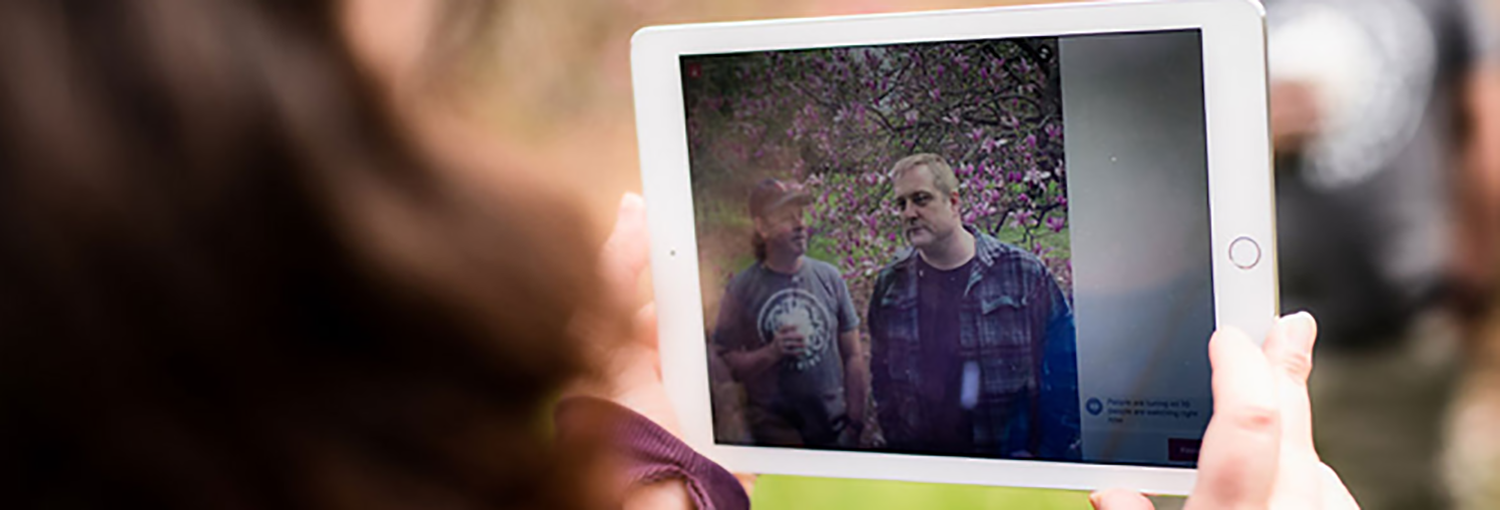
[bctt tweet=”“Give your audience engaging, curated experiences over live video to really show them something new.” – @presReagan #WhyCollaborate #podcast”]
Yeah I think those are two really great examples. I like that you call them engaging, and engagement might be kind of an overused term, but then this whole idea of it being curated, that you’re picking these experiences, like with Cheffrey and the Sir Rocha Says experience, you know, the cooking experience example, you know you’re really picking something that is going to resonate with that audience and add value, right? Because people’s time is limited, so if they’re going to spend some time with you and your video, you want to be able to add value to their life.
I have a question, Reagan, about the social influencers because we do talk about that quite a bit in circles around travel and tourism of course. Can you talk a little bit about how you go about identifying social influencers to work with?
We’re still experimenting with it too, which I think is very important to note because when these new trends come, people get intimidated about taking on these new Facebook Live or using social influencers, so I want to also say that we’re always learning and we’re always experimenting with what will work. If there’s anything I’ve learned it’s that you can never predict how the public will react. At first I think our main objective was finding someone who had a large following, and in this case, I think at the time Sir Rocha Says had about 10,000 followers between the different blogs and Facebook and Instagram. We had just started Rochester Lilac Festival’s Instagram, so it was important to find someone who had large audiences, but also in places that we hadn’t touched yet. And then obviously like her account focuses on food and beverage in Rochester, so that was a good alignment with the type of subject matter we were going to be talking about.
That was two years ago, and last year we had her do another cooking demo. This time they made a Moroccan salsa that was sold by one of the vendors. We have that demo, but then we also used two other social influencers to sell tickets for the craft beverage expo. Rochester is a smaller market than obviously New York City, so we don’t have quite as many social influences I would say readily available within the food and beverage industries. But what we did was we found two other women who had beer enthusiast accounts. One of them only had about 500 followers on Instagram, whereas Sir Rocha I think was up to the like 7000 or 8000 on Instagram at that point. What was really fascinating to us is we gave all of them the same outline of what we wanted them to do, they got promo codes for the tickets and what we would give them in return. So everybody got the same package, and it was interesting to see the difference in ticket sales. They all actually ended up being about the same, despite how you however many followers they had on different platforms.
They all did an amazing job and we’re pleased with all three of them, hopefully, we’ll use all three again this year. It was just fascinating to me that even what seemed like the smallest fish was able to pull the same amount of weight as the larger fish, and I think that has to do with she was a little bit more casual in her message, and her followers were engaged more. The percentages of users that actually engage with her content was a higher percentage compared to the followers of the other two women. That was a lesson learned for me that you know it’s really not as black-and-white as how many followers you see on someone’s account.
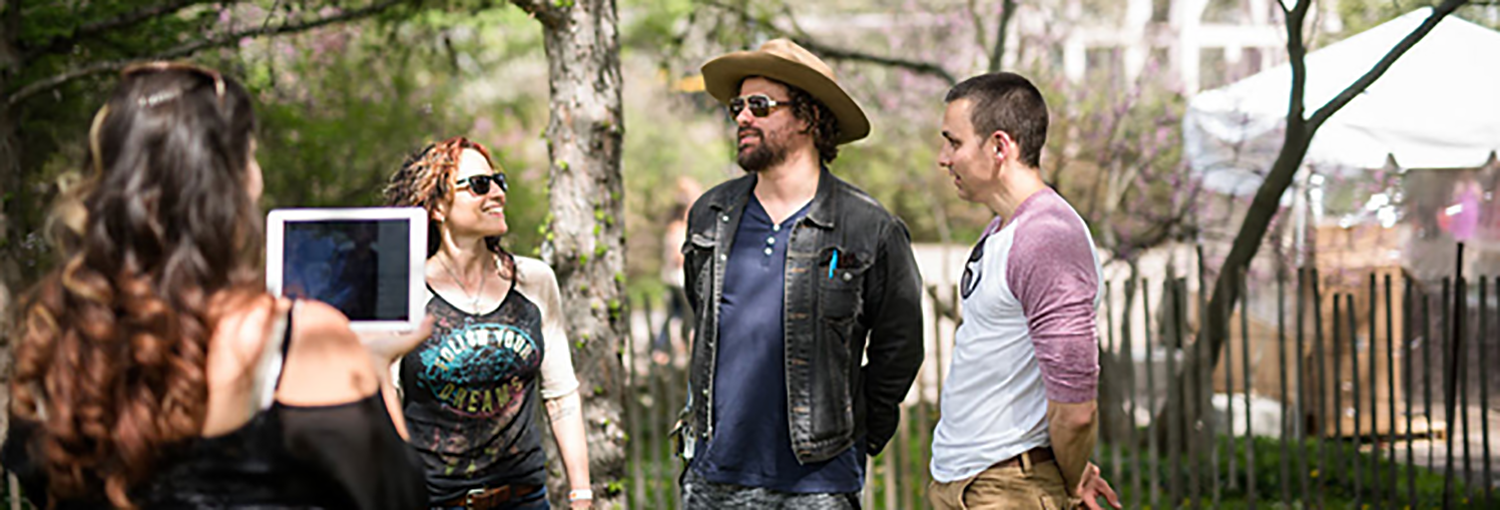
[bctt tweet=”“The effectiveness of an influencer is really not as black-and-white as how many followers you see on someone’s account. Sometimes someone with less followers has a more engaged audience.” – @presReagan #WhyCollaborate #podcast”]
I think that’s a really excellent point. Actually, there are quite a few really great points that you just made in that discussion. To start, I think it’s important for listeners to realize what you started with, which is that you’re always learning and experimenting especially when you’re talking about social media and new trends are changing all the time. Even though there are people like you who are you are very well experienced and understand strategy and understand how to be nimble and how to move with the trends, you’re still experimenting and learning because they’re just isn’t enough time to master it before the next change.
Always. Yeah, always, always. It’s always changing. It’s crazy.
Then your point about the evaluation, I think that that was really valuable the way described that because you first started talking about audience size in terms of evaluating your influencer, and then you talked about alignment of subject matter. You talked also about getting it aligned with a channel that you might be trying to grow. In your example, the instrument account was new, so you were looking for somebody with Instagram followers that could help you grow your channel.
It reminded me actually of this content map that I had seen at a conference recently where they literally take two lines, one vertical one horizontal and make a T if you will, and chart things based on what is it that we’re looking for? Is it big audience, small audience? Is it high production, is at low production? And kind of chart things out, because these influencers fall in all different kind of quadrants if you will, depending on what you’re looking for.
I love that example of those craft beverage influencers that you aligned with and how their followers, even though they had less of them, were so committed to them that they were able to make the same amount impact as say the larger following. I think is really important.
Yeah. I think committed is a great word to use about it.
Yeah. I think that that’s fabulous.
How to Up Your Live Video Game
You have been talking about your Facebook Live videos, and I’d like to dig a little deeper on that as well. You’re right about Facebook Live, and now, of course, you can do this on Instagram and there’s video you can do on Snapchat, and in all the circles that we’re running people are talking about how big video is going to be. Like 2018 is the year of video. Can you share a little bit more about when you should consider doing a live video and maybe how you figure out which channels to do that on? And then actually if we could take that one step further, what happens to that video afterward?
The most important part for our events, and I keep using Rochester Lilac Festival, they’re a great client, but they’re a good example of someone I’ve had the freedom to do all this experimenting with so that I would keep pulling from that. When I came on they had about 50,000 followers on Facebook. That was a great stepping stone in terms of we already had this established audience, and so that’s why we started in on Facebook there is we thought this is a new method, let’s see how this goes. This year we’ll probably go more into Instagram videos and Snapchat. We actually experimented with Snapchat a few years ago and did not get much engagement. I don’t think that is much as Snap was growing at that point, people weren’t quite ready for businesses and events to have their own accounts and to really follow them the way that they do on Facebook and Instagram, but I do think that’s changing, so we’ll probably play around with that a little bit more. Our Facebook videos two years ago exploded.
I mean we did an interview with Rusted Root, and we did that, this is important to it too, on that video we did five videos for the Lilac Festival, on the Rusted Root. They had so much bigger of an audience than us that we actually ran that Facebook Live from their account, which helped us to get exposure to our account because we were opened up to their audience and their national and international audience.
Last year we saw a drop in the engagement of Facebook Live. I don’t think it was necessarily our fault for providing like a bad video, I think it was just people were very excited about Facebook Live coming out so that anybody could use it two years ago. Like you said, everybody’s busy, not everybody wants to sit there and watch a video, or song on the weekend, and so last year we played around with those different influencers and whether we need an influencer at all.
Just like I said, we used Sir Rocha Says for a cooking demo, we had John Alexis from American Ninja Warrior do our opening video for the festival, and he’s building his audience right now, so he had about 700 followers. That was really about more name recognition of American Ninja Warrior rather than like his name or reaching his audience. Then the third video we did last year didn’t have any influencers, but what we did do was pull in multiple vendors so that the third video we had three women and got samples of a bunch of the different lunch foods that you can get the festival. Then we put all of those in and we kind of had tastings of everything and commented on the food.
To go to your last point, the whole purpose of that video was to tag all of the vendors is after-the-fact. So after the video went live, we edited it to include captions for people who couldn’t have video on for one reason or another, and then we also went through and tagged all of those vendors and anybody that we had mentioned throughout the video. That was really about engaging those vendors so that they would then share on their platforms the live video after it was done.
So are you taking that live video within the constraints of Facebook and making those edits or are you saving it somehow outside of Facebook and then re-uploading it?
A little bit of both, depending on the video. I actually have a blog entry on my website that outlines all that. I think it’s seven steps that I give of after you do an actual live video, how you should use it afterward.
Oh, terrific. We will make sure we link to that in your show notes so that listeners can go and look at up and get some advice on how they can do that. That would be great, thank you.
Yeah definitely. Last year we started using a software called Switcher Studio, which I learned about when I went out to the Social Media Marketing World Conference in San Diego in February. I’m going back this year; it’ll be my third year. For anybody who’s looking to get more and more into social media, I would highly recommend that conference. It was amazing and life-changing. I met the founder of Switcher Studio. This is a software where it’s kind of like a video studio, but you can use it on your iPad or your phone and it’s a base. I usually have it on my iPad and then I have two or three people with mics connected to other smartphones, and I can switch in between shots. So the smartphones basically act as different cameras and I can switch back and forth from which camera I want to be focusing on.
[bctt tweet=”“With Switcher Studio, I can use smartphones as different cameras and switch between them on the fly to make live video on Facebook even better.” – @presReagan #podcast”]
We did that for the video with John Alexis from American Ninja Warrior, where we were interviewing people in a line. John would be doing an interview and then we kind of had someone doing B roll about the Hurlbut hug that was going on. They were trying to set a world record. That was all going on in the background, and so we kept switching from camera to camera. With Switcher Studio, you can actually pre-record video and then upload it during the live broadcast, so you’re kind of merging live video and traditional video into one video and then curating it on the spot with Switcher Studio.
Wow, that’s really cool. Well, thank you. We’ll make sure that we link blog so that listeners can follow up on that and can look into Switcher Studio as well. That sounds amazing.
Make Your Business Model Work For You
I want to switch gears just a little bit because I like to talk about creativity, but I also like to talk about creativity that happens when you’re faced with a challenge or some sort of adversity. I’m wondering if there is a time in your career where you faced some sort of a challenge, and then what kind of creativity came from that. Can you share a little bit about that?
Yeah. The biggest challenge I have ever faced with business is personnel. Finding people that you can rely on and trust and teach. I am sure you know that it’s invaluable to have a great team, and that was something I struggled with when I was first starting out. Because I had just moved back to Rochester, I wasn’t super familiar with other creatives in the area and when I would take on a project and whether I was overwhelmed or whether I needed a photographer or programmer or what have you, I didn’t have those resources available. That was definitely a struggle and I think I started to get burnout, and I wanted to grow. I wanted to get those bigger projects. I didn’t know how I was going to handle it completely on my own.
I think when you’re first starting out in business, you look at these people who have agencies you know, maybe 50 person agency, and you think like, “Wow that’s really making it. That’s what I should aspire to be.” And with a little bit of growing up and a little bit of experience, what I came to find that works for me was staying with just me and my business, and then using different professionals of different skill sets for different jobs.
Now I see myself more as a creative director in my role, and I’m bringing people onto my team as I see fit based on their strengths. I do have a part-time assistant who’s with me 100 percent of the time, and she is absolutely amazing and a godsend. I don’t know what I would do without her, but she is not a designer or photographer or videographer, she’s more of a content creator and task manager, which is perfect. She fills that void. But for the more creative parts, I have now built this network of people that I know I can call on whether I might want a different designer for a corporate piece, I might want a different designer for a logo, depending on what the logo is, I might use a different designer. Same with programmers, developers, videographers, and photographers.
We have a great photographer for the Lilac Festival, and then when I went up to the Adirondack Coast to take pictures for the wine trail, I brought a different photographer and that was kind of a lesson, or it was a path to leading to that decision to realize that actually in my case it’s better to use people for their strengths and not try to like force someone into a job or project they might not excel at and to be okay with using multiple different talent sources.
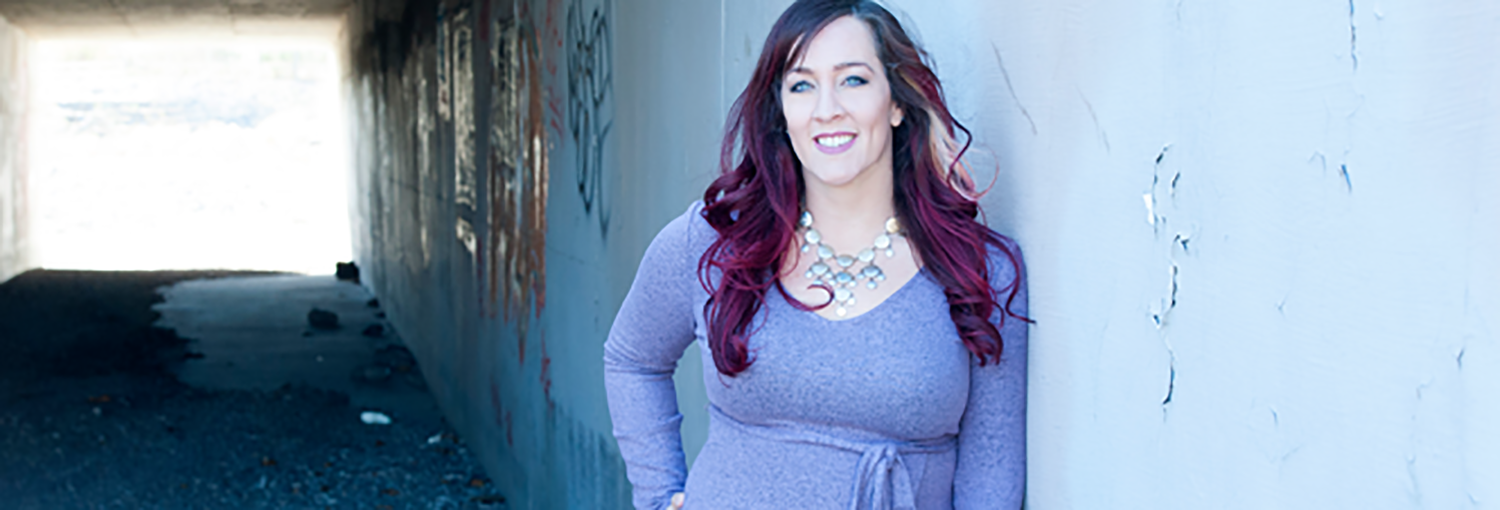
[bctt tweet=”“Use people for their strengths. Try not to force someone into a job or project they might not excel at. It’s okay to use multiple different talent sources.” – @presReagan #WhyCollaborate #podcast”]
I think that’s just brilliant on your part because what you’re doing is recognizing your business model. You started by looking at a 50 person agency and thinking that that’s what you aspire to be, but really being honest with yourself and asking, “Well is a 50 person agency really what I want and where I am right now in my path what makes most sense?” and then recognizing your business model and what makes you and your business unique is now is this kind of creative way that you are addressing the human resources issue really. I think that that’s just very astute of you to recognize that. I know a lot of people struggle with that and talent, no matter what industry you’re in, can be and is a struggle. So I think that’s fantastic.
Yeah, thanks. It was a multiyear path.
Yeah. Well, not all of our listeners own their own businesses, but certainly several of them certainly are in leadership roles and can relate. Regardless, it’s always a journey and we’re always learning and growing right? You’re looking at things through different lenses like you look at things differently now than you did eight years ago when you started your business. You have a different lens. You know you have different contexts, so I think that’s awesome.
Are there any projects you’re working on right now that you’re really excited about that you can share with the listeners?
Well, we’re ramping up on Lilac Festival right now. It’s ten days, and it always starts the weekend of Mother’s Day. This year, that is May 11th to the 20th. We usually start working on the Lilac Festival pretty much in October the year before, but right now is really crunch time where we’re releasing the tickets to get sales for the any of the paid events we have, which are the wine tasting, the craft beer expo, and we have a 5K-10K run. This year we have a Bloody Mary event happening the Mother’s Day Sunday. We had new brands, logos to come up with for all of these new web pages, and of course, it’ll happen at once, and it’s a big, big moving target. We’ll be really, really busy with that
Right now, I am in the process of coming up with a strategy for how we’re going to do our live videos and use our social influencers, but even more this year. I want to bring on more diverse influencers to advertise the different events and push them out in different markets. It was interesting last year when we look at our data that for the craft beverage expo a lot of attendees were coming from Canada. I think that’s important to Visit Rochester’s efforts to bring people down from Canada and have them experience the tourism in Rochester, but we kind of have these new pockets of markets opening up that we have to talk to in completely different ways, and so we’re in the process now of putting together all that marketing, graphics, the copy, the concepts behind the events, and I’m so blessed to have them as a client. I think it’s the most exciting work I could be doing. That’s what we’re leading up to. I also actually just got the contract for Party in the Park this year, so we are going to have that being new too and pushing those new branding and website out.
Exciting. Well, there’ll be no shortage of work to do then.
Oh no, and I’m relying on all of those different talents sources in a big way right now.
Yeah, I’m sure you are. That’s awesome.
Respect Your Collaborators
Well, I want to switch gears now to the other topic that we like to cover on this podcast and that is collaboration. We talked about Lilac Festival, what a great example of huge collaboration, but I want to talk about what I like to call coopetition actually, which is where perceived competitors come together and work on something and create something that’s larger than what they can do all in their own. I’m wondering if you can describe a time when a collaboration maybe between perceived competitors has worked for you.
Yeah well going back to kind of that data that we got about Canada, about two years ago Rochester events brought in Site Hub and Sean McKay to really take a deeper look at the analytics that we had set up and try to draw some subcategories of demographics. Sean and Site Hub, they make websites, so I, they do branding, so do I. We have a lot of overlap in the service that we provide to our clients.
Coming into that meeting and meeting Sean, he’s just the nicest helpful person and we’ve gone together on different bids since then and he just brings a completely different skill set and I love it. I love having him. I love that I don’t need to go and learn analytics. I don’t need to be an expert on that and I can just understand it at a beginner to moderate level, and I can develop strategies from the information that he gives me, but I don’t need to be doing it myself. You know, that’s his strength and that’s what he’s passionate about. On paper, we look very much the same, but like with most people we’re all very, very different, we come from different backgrounds, we have different clients and different experiences, and it’s fascinating to see those two things come together and work together as I’m sure you’ve seen in most coopetitions.
He really led us in a big way on what strategies we should use for the Lilac Festival last few years. Data, as I’m sure you know, is becoming bigger and bigger when you look at those companies like Facebook and Amazon and Netflix, and when we can draw from what people actually want to see and hear about, we can provide them with those better experiences. I really see that as being a very natural marriage, those two things.
I love how you just brought that together, the data and understanding what people really want to do and to see and bringing that together and saying that actually will give those people better experiences by knowing that and understanding the data, you’ll be able to provide much better of experience. I think that’s really awesome.
Nobody wants to be spammed to. Or to hear about events they don’t care about.
Yeah, exactly. Exactly. Through that partnership or maybe any other collaborations that you’ve worked on, do you have any best practices or any piece of the device to offer our listeners in terms of working in a collaborative partnership like that?
Just openness. You know, constant conversation and just be able to communicate with other people is so valuable, and everybody’s busy, everybody’s plates are full in today’s world, and especially in that partnership something I always find is just having the respect for the other person’s time and making sure you’re not wasting their time, whether it’s through your own not being organized or what have you, I think that’s the most important thing. Just that respect and open communication and what could possibly go wrong? Hopefully not much if you have those two things.
Yeah, that’s right. That’s great advice. I think respect for the other person’s time I think is so necessary to think about because you’re right everyone’s plate is very full, and acknowledging that and being respectful of each other definitely is key. Openness and constant conversation, also very good advice.
So, it has been an awesome time talking to you. I’ve learned so much from you today, Reagan. I really learned a lot about the social influencers, the Facebook Live, the creativity that you bring to your work. Are there any final thoughts that you would like to share with our listeners before we say goodbye?
Just keep experimenting, keep learning. Or what’s also valuable is finding someone like myself to do your social, because if you don’t want to learn and if you don’t want to be experimenting with it, don’t torture yourself the way I would be if I was doing analytics. Be okay with not knowing everything and using people’s talents for what they’re valuable in.
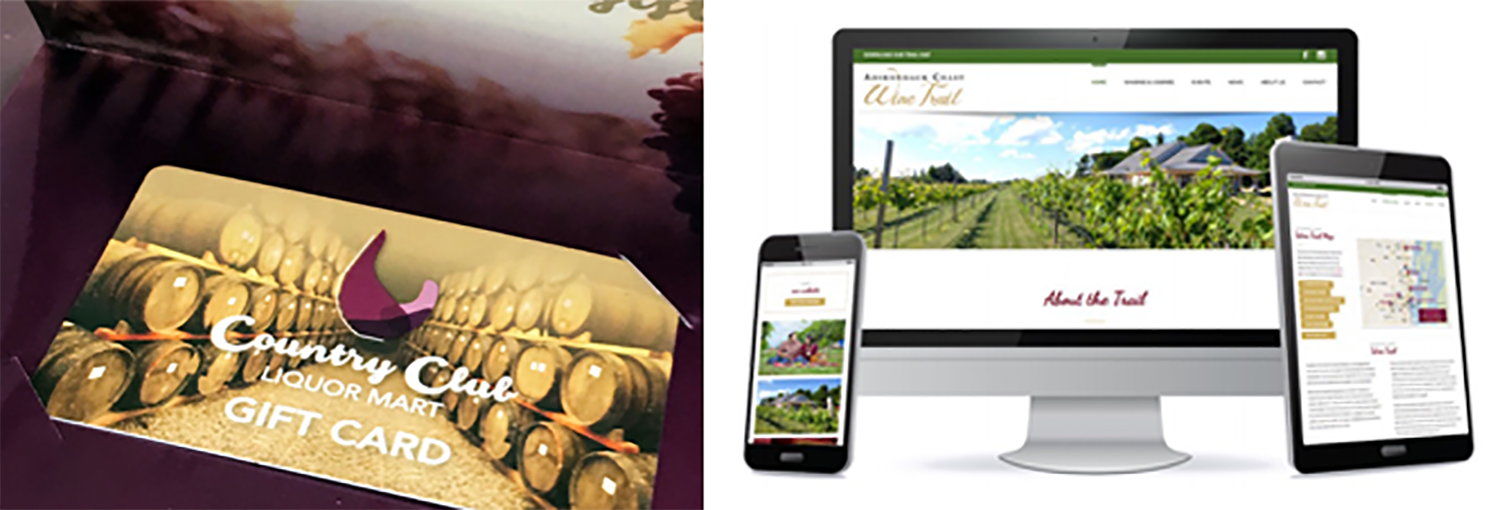
[bctt tweet=”“Be okay with not knowing everything. You don’t have to do everything yourself. Use other people’s talents for what they’re valuable in.” – @presReagan #WhyCollaborate #podcast”]
Absolutely, I think that’s great advice. Keep experimenting and learning, but if you don’t want to do it, then hire someone. I think that’s a great way to wrap up this conversation. Thank you very much for spending your time with me today. And we’ll look forward to checking back with you sometime in the future.
Yeah, thank you, Nicole.
Resources:
We value your thoughts and feedback and would love to hear from you. Leave us a review on your favorite streaming platform to let us know what you want to hear more of. Here is a quick tutorial on how to leave us a rating and review on iTunes!
